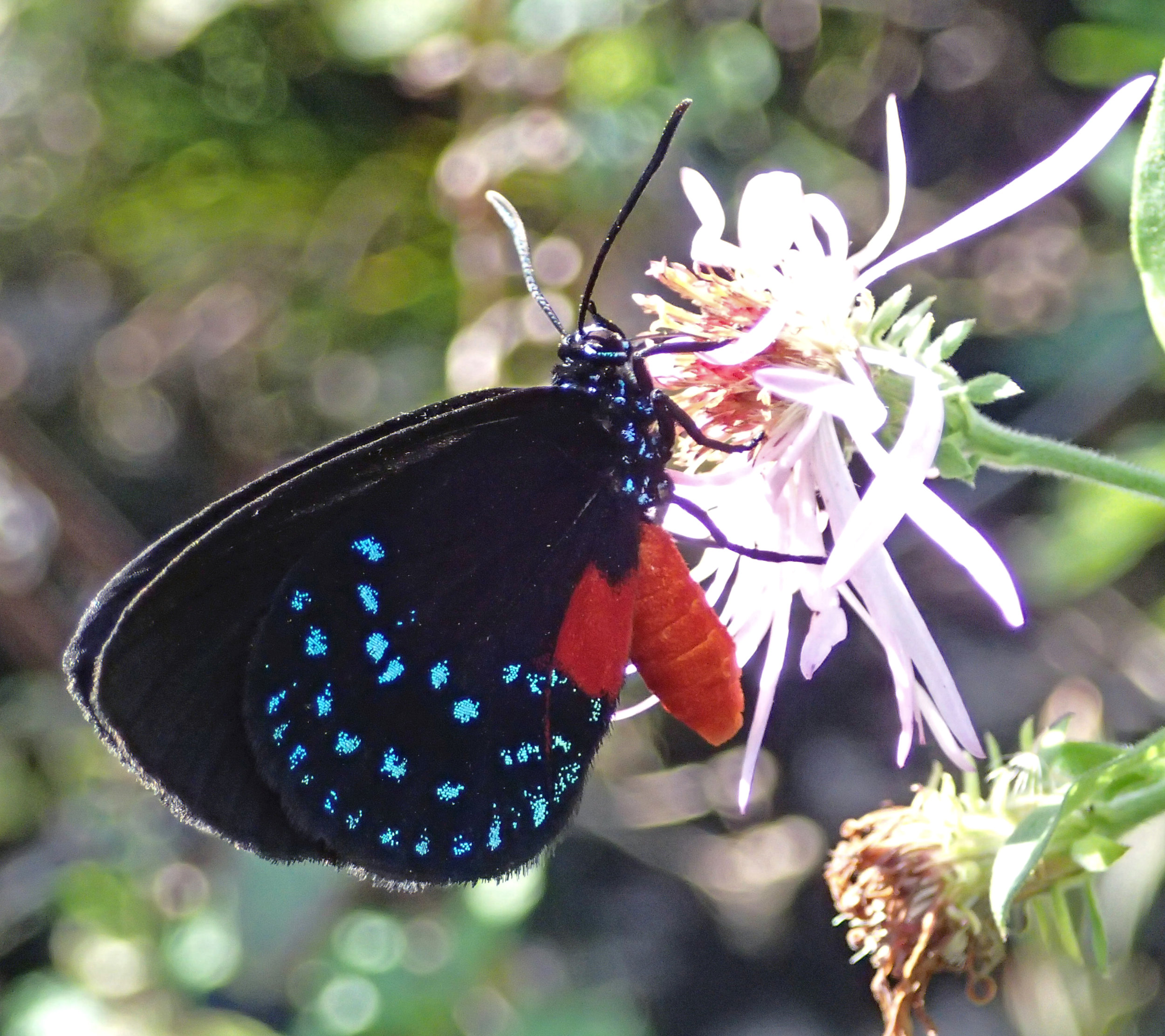Photo by andy_king50 licensed under CC BY-SA 3.0
Most of us here in North America probably know cycads mainly from those encountered in botanical gardens or as the occasional houseplant. However, if you want to see a cycad growing in the wild, you don't have to leave North America to do so. One must only travel to parts of Georgia and Florida where the coontie can be found growing in well drained sandy soils.
Known scientifically as Zamia integrifolia, the coontie is a cycad on a small scale. Plants are either male or female and both are needed for viable seed production. Here in the United States, the coontie is considered near threatened. Decades of habitat destruction and poaching have caused serious declines in wild populations. This has come at a great cost to at least one other organism as well.
Photo by James St. John licensed under CC BY 2.0
Thought to be extinct for over 20 years, a butterfly known as the atala (Eumaeus atala) require this lovely little cycad to complete their lifecycle. The coontie produces a toxin known as "cycasin" and, just as monarchs become rather distasteful to predators by feeding on milkweeds during their larval stage, so too do the larvae of the atala. The brightly contrasting colors of both the caterpillars and the adults let potential predators know that messing with them isn't going to be a pleasant experience. The reason for its decline in the wild is due to the loss of the coontie.
Rediscovered only recently, populations of this lovely butterfly are starting to rebound. Caterpillars of the atala are voracious eaters and a small group of them can quickly strip a coontie of its foliage. For this reason, large populations of coontie are needed to support a viable breeding population of the atala. The coontie is becoming a popular choice for landscaping, especially in suburban areas of southeastern Florida, which is good news for the atala. As more and more people plant coonties on their property, more and more caterpillars are finding food to eat. This just goes to show you the benefits of planting natives!


